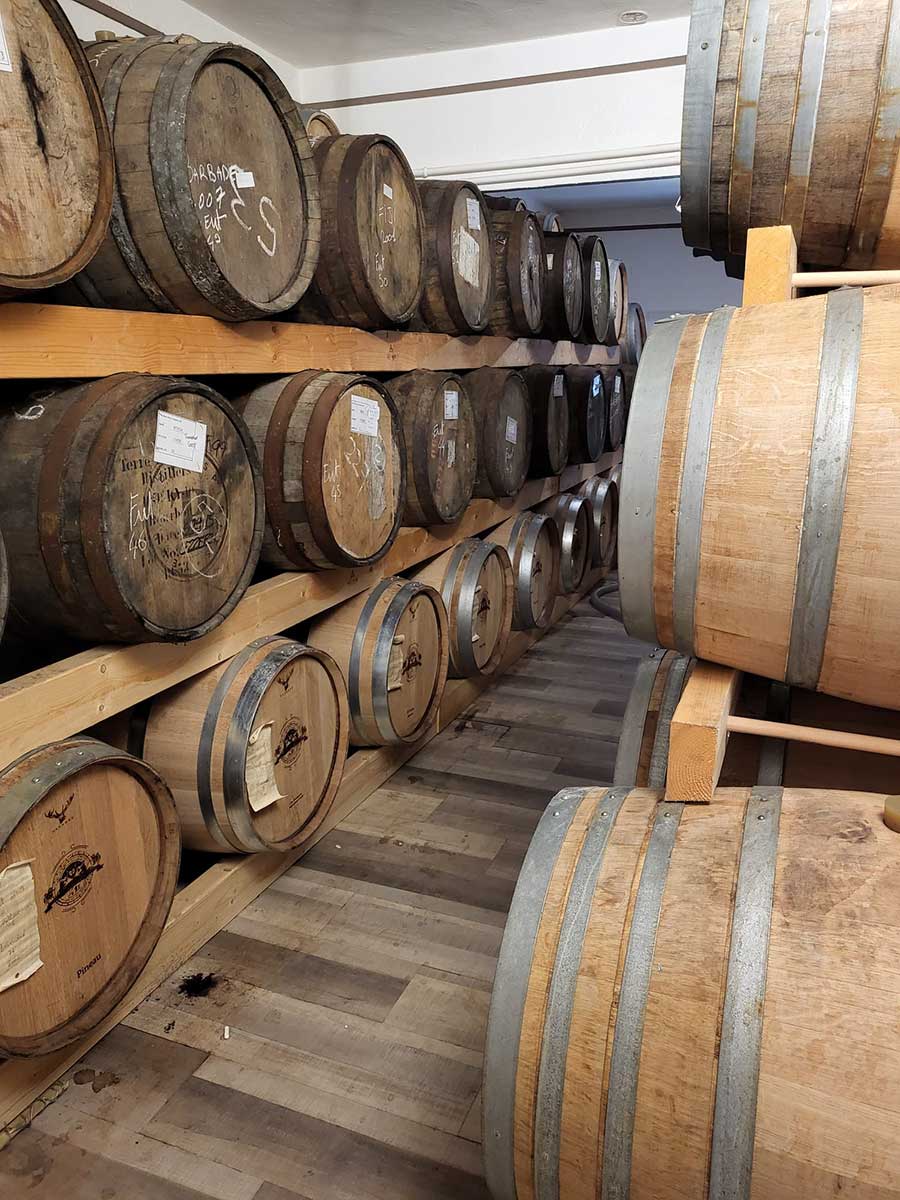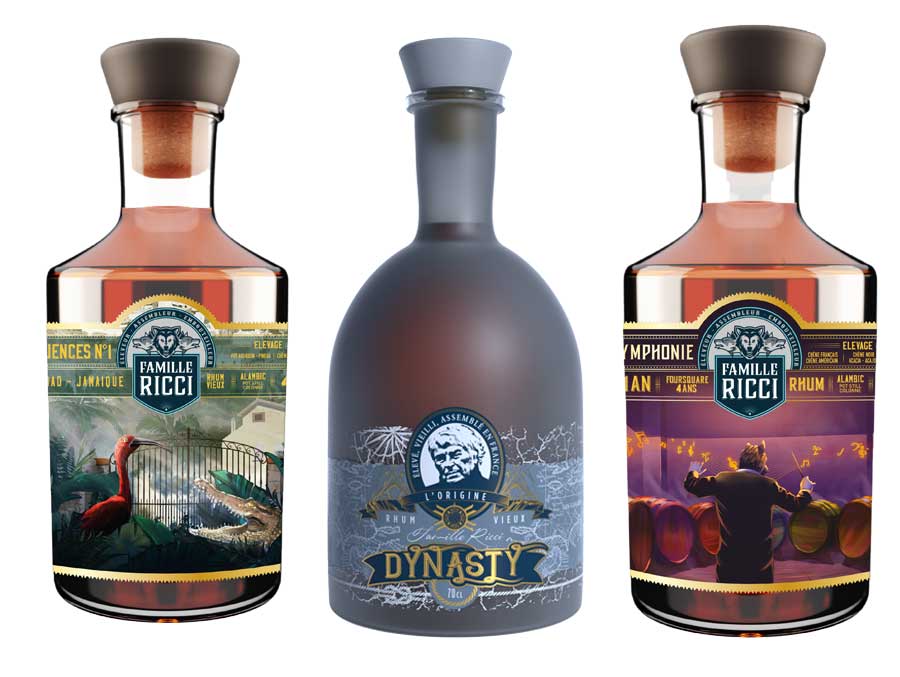Very much appreciated by rum geeks for its most cutting-edge and crazy ranges, Famille Ricci nevertheless offers accessible vintages both in terms of price and taste. Independent bottler, now master blender and soon distiller, Morgan Ricci, accompanied by his brother Esteban, gives us his unpretentious views on the price of rum, speculation, the bottler’s job… And gives us an update on the new releases coming out this year. Spoiler, it’s about caving (or almost)!
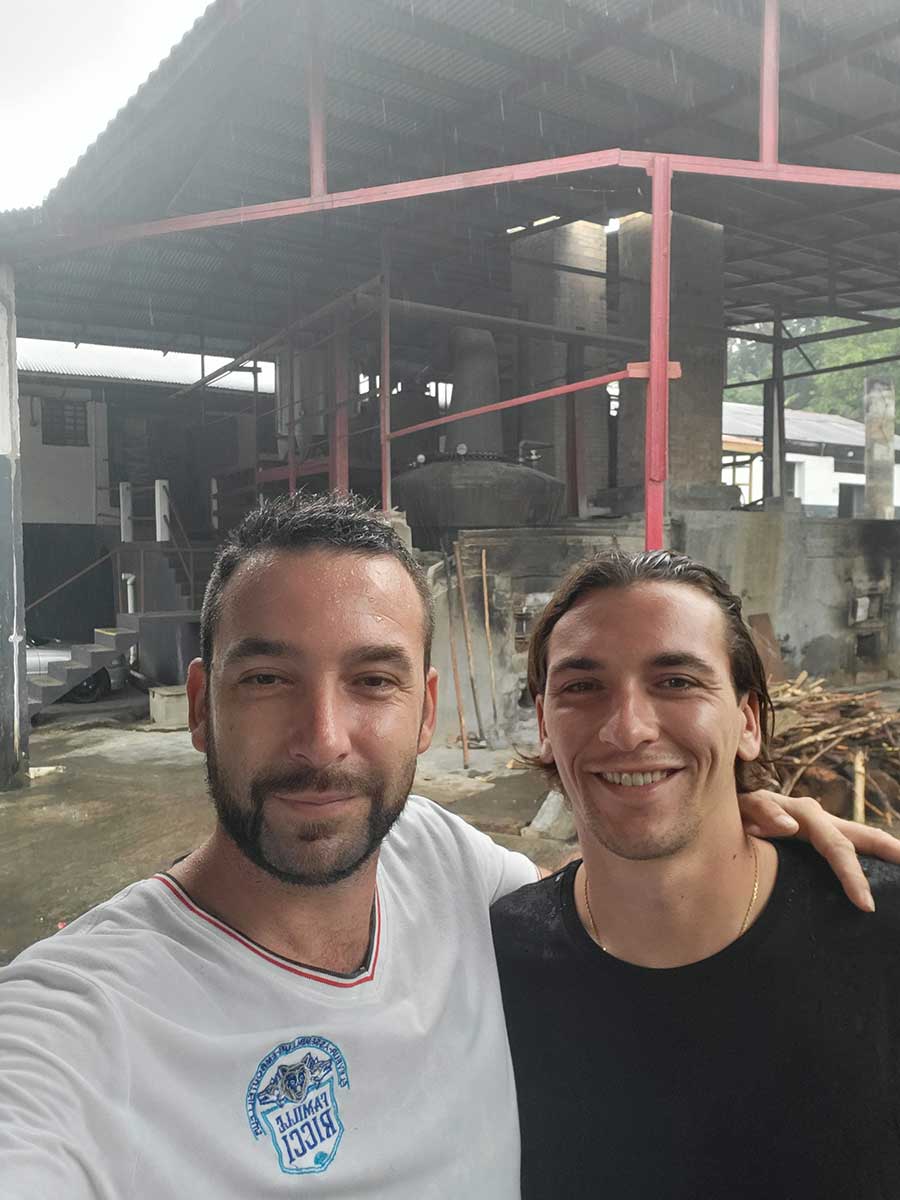
How did you get into the rum business?
I’ve always worked in the spirits industry, starting with champagne and wine as a technical salesman. Then I fell in love with cognac and spirits in general. Then I opened my own cellar in Antibes in 2014-2015. And thanks to the salespeople who came to present their products to me, I discovered rum. I realised that it offered a much wider range of possibilities than other spirits. And that fascinated me.
And how did you come to want to produce your own rums?
Since childhood, I’ve always loved creating mixtures. In fact, I used to make my mother taste them, poor thing! So I decided to create my own rums. But I didn’t just want to select juices and bottle them, I really wanted to create my own blends, with the key words being aromatic and complex, to be as close as possible to the product and to discover all the secrets that could be revealed at each stage of production.
And when did you take the plunge?
In concrete terms, I launched my project in 2015 and it took four years to see the light of day. Time to train at the Cognac spirits school, to learn from cellar masters, to travel, to taste and to define my own philosophy… And so it was in 2019 that I launched my first vintages. We released four of them at once. Dynasty, which is our 40% consumer range, which is quite gourmet. And our Influences range, which is blends of two provenances and is 46%. It’s a bit more sophisticated, but it appeals to a wider audience.
These are permanent ranges. This was our strategy at the beginning: to make ourselves known to a large enough public to establish ourselves in the wine shops, and then to offer more precious and rare products. People often say that Famille Ricci is expensive. In fact, the majority of our work, and where we make the most volume, is on our current ranges with accessible budgets and palates, today composed of eight vintages which range from 45 to 65 euros in public price.
But it is rather the more sophisticated cuvées that are making the buzz, isn’t it?
Yes, because they are aimed at connoisseurs and enthusiasts who are really active in the rum world. But we have some affordable vintages in terms of price that manage to conquer their hardened palates, such as our Volt Face and 7th Symphony vintages, or certain limited editions that allow you to indulge yourself on a more regular basis and keep the most highly rated vintages for more exceptional occasions.
You emphasise blending as your brand philosophy, but you also make single casks, how do you choose the destiny of your juices?
First of all, with my brother Esteban, when we travel and select our rums, our reflex is to ask ourselves what they could be blended with or in which casks they could continue their ageing to make them even better. When they are in our cellars, we taste them regularly according to the age of the rums, the barrels used and what we want to achieve. And once we have what we’re looking for, we decide whether to release them as is or blend them.
Even an exceptional rum can gain in quality, especially in aromatic complexity, if you blend it with another rum, but to discover it you have to be completely open psychologically, to keep a constant curiosity, to have a great knowledge of the art of blending. In order to be able to project yourself and imagine the possible results. Finally, you always need a touch of audacity. But there are also some quite exceptional juices as they are. We release them in single cask, especially in our Exception range. This allows us to highlight the very high quality work of the distilleries of which we are the first ambassadors. We are not competitors, but partners. Without their fantastic know-how, we independent bottlers would not exist.
You are an independent bottler, but also a breeder, tell us about this aspect of your job.
Ageing is an art in its own right and, along with the magic of blending, it is what Esteban and I are most passionate about. Ageing is a particularly important part of the qualitative construction of a spirit, not only in terms of aroma, but also of structure and texture. With Esteban we study and work a lot on this part, because there are so many horizons that have not yet been investigated.
Aging is 95% in French or American oak barrels, although there are dozens of other types of wood that all have different and interesting texturing and structuring aromatic properties. At Famille Ricci we have been studying and working with ten or so of them for years, which allows us to broaden our knowledge and to have more tools for the creation of our rums via ageing in our cellars in Mougins (Alpes-Maritimes).
We are constantly looking to make the juices more complex, to give them an extra touch. For example, if we want to give a rum notes of candied yellow fruit, we’ll put it in a pineau barrel. If you want more character and tannins, it will be French oak or chestnut, if you want more elegance and notes of cereals and a touch of honey, it will be acacia. After all, not all woods go with all juices, and it’s only by studying them and experimenting that we can achieve good results.
Precisely, how is the ageing going in the Alpes-Maritimes?
It makes me laugh when I see the quarrels on the networks between the supporters of tropical ageing and those of continental ageing. It’s not that the tropical is better than the continental, it’s that they have different attributes. On the plus side, the tropical climate will draw out the aromatics of the juice faster and more intensely.
On the flip side, it can be a little abrupt and lacking in elegance with the risk of awakening the fire of the alcohol. The continental climate will age the rums much less quickly, but on the other hand will allow them to gain in mouthfeel, in texture, in elegance. That’s why I often like the combination of the two.
And what role does the local climate play?
In the south-east of France, we have our own climate, which can be described as Mediterranean. It’s a sort of hybrid between the tropical and the continental with big variations in temperature between day and night and according to the seasons.
With Guillaume Ferroni, we have observed losses of 6 to 10%, which confirms that our climate cannot be put in the continental box.
Our climate is a fine example of balance with the impact of what the barrel will give to the rum over time and the texture and integration of the alcohol that will keep a minimum of flexibility. For me it’s an almost perfect climate.
You’re known for trying out some daring blends and ageing, what are the worst mistakes you’ve made?
The big mistakes I made for four years before I really started. But since then, I hope, nothing irreparable. Sometimes you can make a mistake and go a bit too far, but often there’s still time to catch up. An average juice on its own can turn out to be excellent in a blend. A very good juice on its own will not necessarily be good to blend.
But I do remember one really bad experience: the time I put a rum in a barrel of maple syrup, it had completely taken over, you could say it was a failure. After that, a blend that never won me over despite many attempts was a white Bielle with Hampden H. You couldn’t say it wasn’t good, but I never managed to bring it up to my expectations.
Is it easy to convince distilleries to entrust you with their rum?
Some distilleries say yes straight away, others are less easy to convince. So when you explain to them that you are going to age their rum in barrels that are a bit unusual and that you are then going to blend it with juices from other houses… In his interview in issue 24, Grégory Vernant talked about someone who suggested that he blend his Neisson with Bielle, and it was me! He thought I was an alien. Given his philosophy of terroir, I understand his reaction very well.
But from my point of view, it was very sensible. For me, what counts above all is the taste, and that’s why we come up with audacious blends. You can blend a white agricultural rum and Hampden 39 years old as long as it makes these two rums better together: with a wider aromatic palette, a more intense concentration, more length… but I don’t blame Gregory at all, he has a philosophy and convictions and he is right to defend them, and you know you can’t reach Gregory’s level without a certain strength of character. This is a quality that I appreciate in him.
There are more and more independent bottlers on the market, what do you think?
It’s good that people who are passionate and who want to start their own business are doing so. But there are also those who start up simply because they think it’s easy and there’s business to be done. It’s simple, they get a listing from the Main Rum Company in Liverpool and that’s it.
Why not, we went there when they usually just send samples. They have some amazing stuff in their cellars and they are a very good partner, but it’s a shame to limit ourselves to their selection. Especially as more and more people are coming out exclusively from their barrels. A passionate independent bottler has to travel and look for nuggets, to exchange with the different cellar masters. It is only through passion and sharing that one is truly enriched.
Speaking of enrichment, what do you think of the explosion in rum prices?
All the old Caroni, old Trinidad, old Guyanese and old Jamaican rums that we had released at a public price of 400/450 euros in our Exception range, have increased in price by 300% in 6 months. So if I were to bring out the same juices again today, they would all be over 1000 euros at public price! And if we don’t buy them, others will. Main Rum may lose customers in Europe, but they will find buyers in other markets.
And when we go and buy directly from the distilleries, we are more and more confronted with the price increase. They are starting to follow the trend… In fact, the problem of rising prices is general. Juices between 8 and 15 years old have all gone up 30% in 6 months… We won’t be able to keep up soon, and the Europeans are in danger of being side-lined. I don’t mind paying a lot of money for a barrel if it’s worth it, but the problem is that it’s indecent.
My brother and I have decided to change our approach, to stay mainly with quality juices aged between 12 and 18 years, some of which are exceptional, but where the prices, even if they increase, allow our customers to open the bottles and enjoy them with great pleasure. The rare and exceptional casks, because of their names and not necessarily because of their quality, will wait.
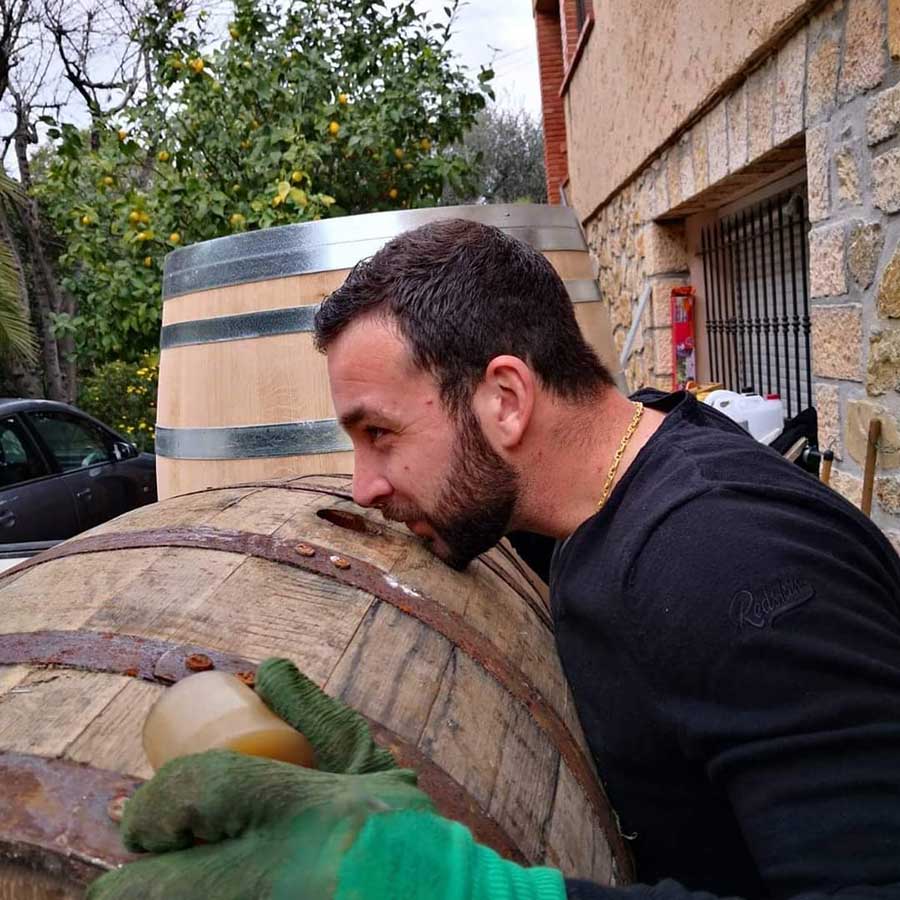
This brings us to the recurring criticism of your selling prices…
We’ve often heard that Famille Ricci is expensive. No. We buy quality juices at market prices. The nuggets are less and less accessible, and when we take the financial risk of buying them and releasing them, we get slammed for being too expensive. People told me I was a crook because the 39-year-old Hampden was over 1000 euros.
But I had paid 700 euros a litre! and it was in line with market prices, like our 19-year-old Bielle for example. We must not confuse everything! We could say that we are not expensive if we released a 1998 Caroni at 800 or 900 euros while the current market price is still 600 euros, but that is not the case if you look at our releases and the market prices we are in the game but not more expensive. We mustn’t forget either that the majority of our wines are under 65 euros.
Is Famille Ricci affected by speculation?
We are not necessarily a speculative brand, at least not as much as some other houses, probably because we are labelled as breeders/crazy blenders because we have a philosophy that has shaken up the traditional codes and not as selectors because our selections are less highlighted because we like to rework them, but we tend to forget that the basis of our work is selection and that it is essential, and we notice that a lot of our bottles are opened and drank.
That said, what annoys me most is not necessarily speculation, even if it is the main reason for such a huge increase in prices! What bothers me more is the sheep effect which is more and more present. It is enough for two people with a large enough audience to say good or bad things about a wine for it to be catalogued by a majority that nobody or almost nobody has tasted the juice. Open the bottles, go and taste at shows or master classes and make up your own mind, we all have different palates, and the only one that is right is yours!
Isn’t part of the solution to produce your own rum from scratch?
Yes, in fact for the last two years we have been working on a distillery project in Mougins. There will be a distillery, a museum, a tasting bar, micro-distillation workshops, an aromatic garden, an orchard and a spirits school. On the distillation side there will be a Jamaican double pot still and possibly a hybrid.
We want to make gin, fruit brandies, and bring out a very high ester whisky made in the Jamaican double twist. But we will mainly make rum with our identity, juices with a complex aroma where things happen.
The most important thing is the emotions, so you need juices that evolve in the glass and that have a wide range of aromatic layers.
So you’re going to buy molasses?
Yes, a quality molasses by favouring short circuits, but we also look closely at what Guillaume Ferroni and Kévin Toussaint have done with their sugar cane plantations in Hyères. I really want to be part of the project. Firstly because it is in the hands of motivated, passionate and competent people, and secondly I have a real affection for the Ferroni house and the people who work there.
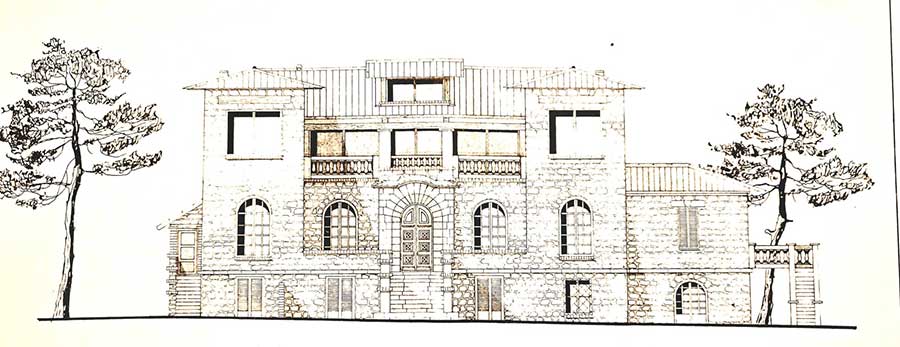
What will happen in 2023 at Famille Ricci?
We’re going to launch a range of 55% whites called Divergences. The rums will be blends of two origins: Hamden H+grogue, Port Mourant white+grogue.
Hamden H + Port Mourant. We’re going to release the 7th Symphony vintage in brut de fût. It’s an atomic bomb! Not forgetting the Zodiaque range. There are 12 cuvées, one for each astrological sign. The rums correspond to the main features of the zodiac signs. For example, in Aries, there is a bit of Jamaican because it has to have character. It will be qualitative, but affordable, around 90-140 euros max.
It’s going to move! Anything else?
Yes, we are working on a range of French spirits, cognac, armagnac, calvados…
My first love is cognac, so there will be three vintages from this year. And I must also tell you about our rum aged in a cave!
A rum aged in a cave? What does that mean?
It’s a Bielle-Montebello blend in white, brut de colonne. We have aged it in 6 identical barrels, 3 in our cellars, 3 in a cave near our home at a depth of 70m. We are going to produce a box with the white wine before ageing, the one aged in our cellars and the one aged in the cave. As for the results after one year, we can see that a spirit that ages at a constant temperature of 15°, in a very humid atmosphere (95%), is more aged than the one that has rested with us with a loss of 6 to 8%.
The colour is darker and the ageing characteristics more pronounced. We conclude that the most important factor in ageing is not heat or temperature variations, but humidity. The proof is that both rums were distilled to 78.6%. At home it was 76% and in the cave 67%. That is a reduction of 10% by dilution. The humidity penetrates the wood and dissolves the elements that arrive in the juice. Finally the barrels overflow!
And when will this nugget be released?
It’s planned for Father’s Day, but don’t worry, we’re putting all our news on our website and social networks as well as on the Facebook group Famille Ricci La Meute so there’s no chance of missing it!

